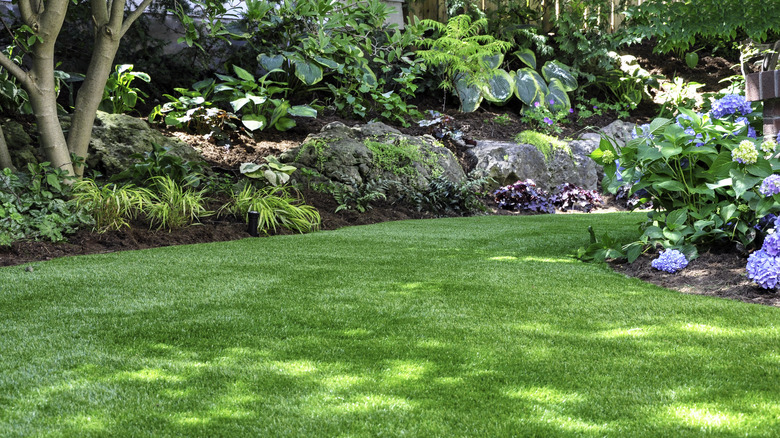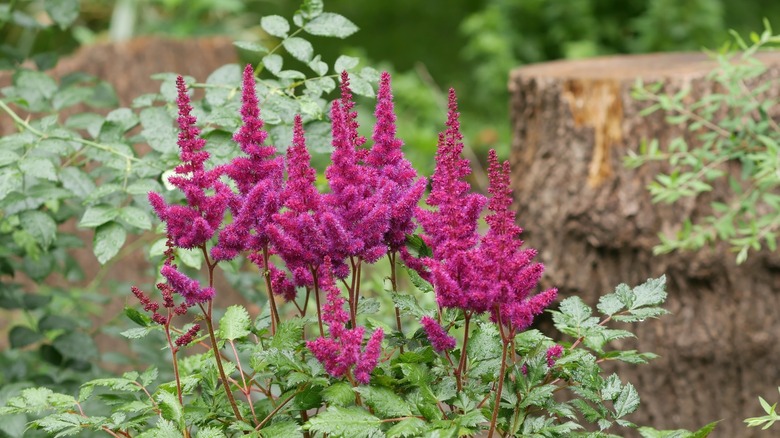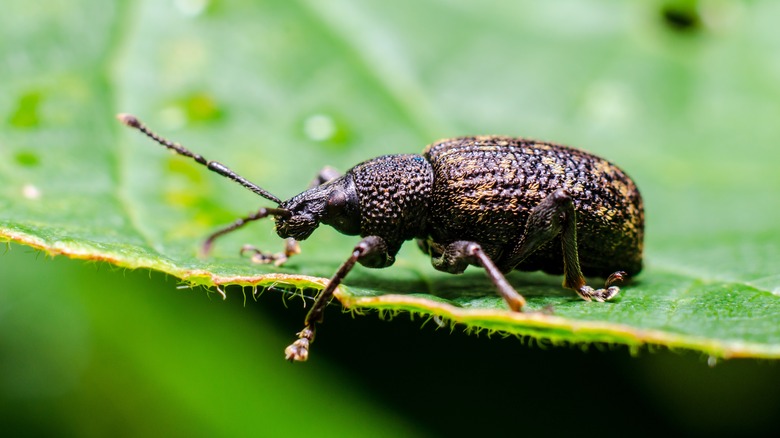The Cotton Candy-Like Flower That Will Add Texture To Your Shady Yard
A lack of sunlight can limit plant choices when designing a yard or garden. Having shady areas on the property can be especially frustrating if you're after fine-textured plants like lavender, Russian sage, or baby's breath, since they grow best in full sun. But there's one plant whose delicate, cotton candy-esque appearance will dress up a garden's composition with the fuzzy texture every homeowner will love — and it grows just fine in the shade.
Astilbes are herbaceous perennials whose tiny, vividly-colored blooms grow on spike-like stems and have a feathery, ethereal look. The tight clusters of miniature flowers make it seem like the stems are holding up bright batches of cotton candy. Astilbes vary in height, from just half a foot to 4 feet, depending on the variety, and they can be red, pink, purple, or white. Most astilbes bloom in late spring and early summer, then die down as cooler temperatures set in. You can remove the stalks bearing dead blooms and leave the still-lush foliage as ground cover, or let the stems dry out to furnish the garden with winter interest. Either way, astilbes will come back to life in the spring and adorn the yard for another summer blooming season.
How to plant and care for astilbes in your garden
Before you plant astilbes, take the time to find a suitable spot for the plants. These fuzzy perennials aren't particularly fond of the sun, and an area with too much direct sunlight will damage their leaves. To avoid this issue, situate your plantings in a location that gets ample shade. And while these water-loving plants will happily tolerate moisture, soggy soil or heavy clay soil that retains lots of water is not ideal. So, make sure it drains properly, staying moist, but not turning into a swamp. A good amount of humus in the soil will be beneficial for astilbes, too.
Once planted, they will need to be watered frequently. To help the plants get established, water them as often as three times per week until they senesce at the end of the warm season. The following year, you don't need to water them as frequently, as long as the soil remains somewhat moist to a depth of 1 inch. Fertilization shouldn't be an issue if the soil contains a good deal of humus.
Protect your astilbes from disease and pets
Meeting the ideal growing conditions is not enough to keep astilbes happy in the long term. These plants can suffer from several fungal diseases, and their fondness for moisture promotes some of these issues. Leaf spots, which can be caused by numerous fungi, are encouraged by astilbes' wet environment and often target the plants' foliage. Powdery mildew is another danger. It's critical to look out for signs of these fungal illnesses and treat astilbes with suitable fungicides to eradicate the pathogens. However, if the plants are suffering from wilt, you'll have to discard the sick plant, its roots, and the surrounding soil to oust the disease.
Several insects will also treat your astilbe composition as an all-you-can-eat snack bar. The Asiatic garden beetle is a huge connoisseur of these plants. As these creatures enter adulthood in mid-summer, they'll feast on astilbe leaves. Meanwhile, the black vine weevil will munch on the astilbes during all phases of its lifecycle. The larvae are known to attack the roots, something you may not observe until the plants start dying. The adults will also go unnoticed at feeding time, since they're nocturnal feeders. For this reason, you have to be proactive in the garden and look for signs of insect infestations before it's too late. Once you've confirmed the bugs' presence, choose an insecticide or use natural means to get rid of the pests.


